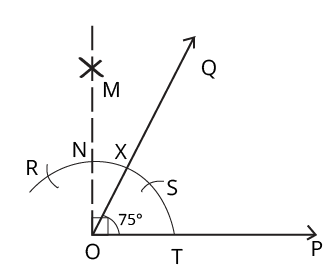Class 6 Maths Chapter 14 Questions and Answers - Free PDF Download
FAQs on NCERT Solutions For Class 6 Maths Chapter 14 Practical Geometry Exercise 14.6 - 2025-26
Q1. What technique should I follow to download the NCERT Solutions for Exercise 14.6 of Chapter 14 of Class 6 Maths?
Ans: Following are the steps or phases for downloading the NCERT Solutions for Exercise 14.6 of Chapter 14 of Class 6 Maths:
Visit the page NCERT Solutions for Exercise 14.6 of Chapter 14 of Class 6 Maths.
As soon as you click the link, it will take you to the Vedantu page.
You will discover that at the top of Vedantu's page there is the option of "Download PDF".
Simply tap that option.
The PDF file for NCERT Solutions of Chapter 14 Exercise 14.6 Class 6 Maths will be downloaded.
You can also take a printout of that PDF.
This way you can also study offline.
Q2. What are the perks of studying Chapter 14 of Class 6 Maths from Vedantu?
Ans: Given are the advantages of studying Chapter 14 of Class 6 Maths from Vedantu:
Availability of high-quality content.
Allows you to talk to experts through online chat to clarify student's doubts.
PDF files for NCERT Solutions are also available.
You can also download these study materials.
The in-charge of creating these contents are subject matter experts.
The language of the study material is easy to understand.
Question papers are also accessible to students if they want to study the chapter thoroughly.
Q3. On what concepts do exercises of Chapter 14 of Class 6 Maths depend?
Ans: The concepts of the exercises are as follows:
Exercise 14.1 - This exercise contains questions that are based on the concept of constructing a circle when a radius is given.
Exercise 14.2 - This exercise teaches you to construct a line segment using a compass, ruler and pencil.
Exercise 14.3 - This exercise also contains questions based on constructing a line segment.
Exercise 14.4 - This exercise teaches you to construct a perpendicular for a line segment.
Exercise 14.5 - In this exercise, you will learn to draw perpendicular bisectors on line segments by following certain rules.
Exercise 14.6 - Constructing angles of various kinds by using a compass is the basic concept behind this exercise.
Q4. How can I prepare Exercise 14.6 of Chapter 14 of Class 6 Maths thoroughly?
Ans: The tips given below can help students to prepare Exercise 14.6 of Chapter 14 of Class 6 Maths thoroughly:
Be ready with a timetable. This will help you to get time for studying Maths.
Make use of the NCERT book to understand the concepts used in Exercise 14.6 of Chapter 14 of Class 6 Maths.
Practice solving each example and question to understand the exercise easily.
Students can use other study materials like important questions to have a better understanding of the chapter and exercise.
Q5. Is it possible to get good results in the Chapter 14 of Class 6 Maths?
Ans: Yes, if a student is dedicated to his/her studies he can perform well in exams. Maths is quite difficult for some students. So, because of this, they are not able to perform well in maths exams. Vedantu helps in making Maths easy for students. It provides all the NCERT Solutions of all the chapters. Experts are available to solve student's doubts. Students can even download the study material. Sample question papers are also provided by Vedantu at free of cost on the official website and on the Vedantu app. If students solve these NCERT Solutions and extra questions and revise the chapter thoroughly, they can do well in their maths exams and can get good marks.



















